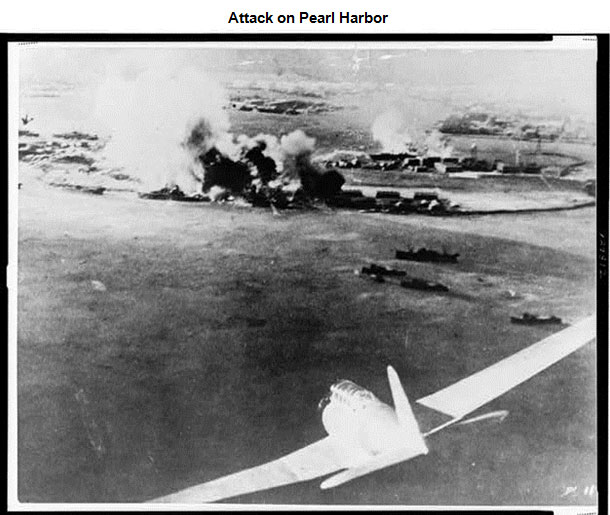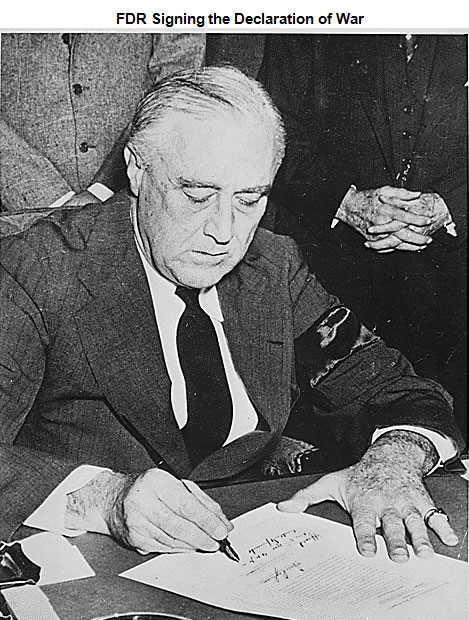
Source: Aerial photograph, taken by a Japanese pilot, of the destruction of Pearl Harbor, Japanese bomber in lower right foreground, The Library of Congress
As the war on the American economy waged on domestically, another war was brewing internationally. In Europe, the leader of Germany, Adolf Hitler, was systematically exterminating European Jews and occupying most of Europe without much resistance. At the same time, Japan was busy occupying China, and inflicting similar pain on the Chinese. By 1939, World War II was in full swing.
The United States took the position of isolationist, avoiding future wars and remaining neutral between countries at war. In August 1935, the U.S. Congress passed the first of several Neutrality Acts. These acts were aimed at keeping the United States out of foreign entanglements. Hitler invaded Poland in 1939, sparking the beginning of World War II.
Roosevelt cautioned that although the United States had taken a neutral stance in World War II, the aggressive behavior of the Axis Powers (Germany, Italy, and Japan) would not allow the United States to maintain that status. Roosevelt took measures to start building a military, and signed the Lend-Lease bill, which allowed the United States to aid the countries that were at war with the Axis Powers.
There was a growing domestic and international opinion that the United States was not acting in a neutral fashion, pushing the United States one step closer to war.

Source: Aerial photograph, taken by a Japanese pilot, of the destruction of Pearl Harbor, Japanese bomber in lower right foreground, The Library of Congress
On December 7, 1941, Japan attacked the United States at Pearl Harbor, a naval base in Hawaii. The United States was immediately pulled into the war.

Source: FDR signing declaration, National Archives
As Commander-in-Chief, Roosevelt had to mobilize the American people for war. Mobilization included drafting a military. There had not been a large armed forces since the end of World War I. Millions of men and women joined the armed forces. Mobilization also included preparing the American home front to support the war effort.
The lingering issue of the stagnated economy would soon be resolved through mobilization. Roosevelt encouraged manufacturers to turn to wartime production. Automakers began to create tanks instead of cars, and other manufacturers began mass-producing weapons, ammunition, and other military goods. War production provided new jobs and stimulated the economy.
World War II was a two-front war; fighting was in Asia as well as Europe. Americans were charged with fighting in both places. Equipped with a massive military and modern weaponry, the U.S. military eventually claimed victory on both fronts.
Roosevelt was credited with selecting the most skillful military leaders. Dwight Eisenhower and his leadership in the D-Day invasion led to the defeat of the Axis Powers in Europe. General Douglas MacArthur and Admiral Chester Nimitz helped end the war in the Pacific.